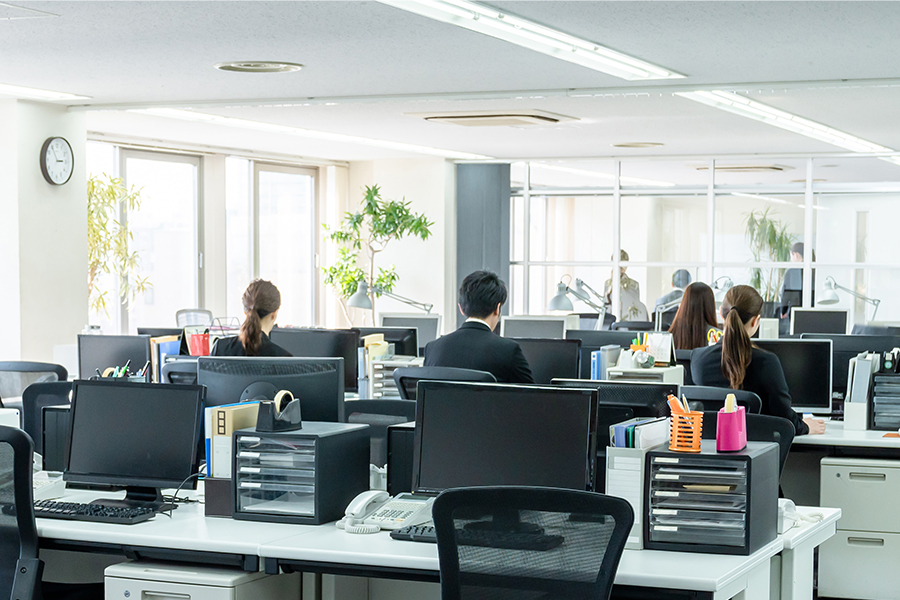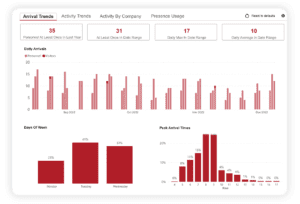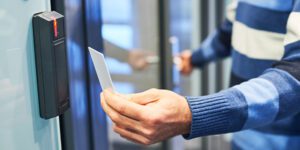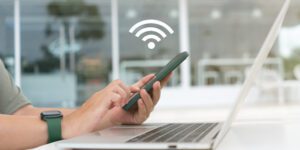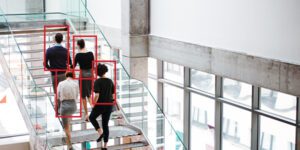Workplace Occupancy Monitoring Methods for Commercial Buildings
Commercial property owners and operators, along with the tenants in their buildings, are all grappling with the dynamically changing nature of workplace occupancy monitoring in the hybrid world. Tenants want to know if employees are coming to work, and when, as well as how much of the space they are leasing is used each week (and is it worth the rent they pay)?
Owners and operators want to understand which tenants are coming in and when, if are they are using the spaces they pay for (and if not, are we at risk of losing their business), are they using the amenities in which in which invested, and how to operate more efficiently given the large fluctuations in occupancy each day of the week?
Some organizations, both operators and tenants, are even looking beyond occupancy/attendance to delve further into workforce needs and behaviors by asking how to measure office utilization?
Gathering and tracking this workplace engagement data is simply too complex and time-consuming to realistically, much less accurately, implement manually with continuous headcount and excel sheets. Fortunately, there are a variety of technical methods to monitor how many employees are coming to the workplace and when as well as how much of the workplace they use.
If you are considering how your property or office can most effectively implement space use and tracking office occupancy data, here is a list of technologies with features, benefits, and limitations of each.
Access Control (Card Swipes)
Access control is one of the most frequently used methods of measuring workplace occupancy or space use because it is already a widely adopted technology across the business spectrum. Long before the pandemic and hybrid working, companies needed to secure their workplace to ensure only authorized people could enter and access control has provided that solution.
An access control system is comprised of electronic readers placed at key entry points of secured location and user-held credential devices carried by authorized users. Credentials can take many forms such as cards, key fobs, even mobile smartphone devices. Regardless of the format, the credential has a code programmed inside that transmits a signal to the reader, which the reader translates as an authorized user or not. If authorized, the reader signals a door lock release and momentarily allows the credential holder to enter.
There is a data point collected for each entry activity that occurs, and thus a count of workplace attendees is recorded each day. This can be analyzed over time to see how the total attendance numbers can vary each day, week, or month for a building or space. Kastle occupancy data is an example of this, where Kastle has tracked the variation in office attendance throughout the pandemic, tracing the early impact of national work-from-home policies when average office occupancy fell to 16% of pre-pandemic levels, all the way through the continued rise of office attendance to the current 50% level.
One of the key benefits provided by modern access data relative to other occupancy technology is that each entry can be linked directly to a unique user identity since access rights are assigned at an individual level as opposed to being undifferentiated. In other words, for a given building, there may be multiple tenants, and each user might only be granted access to the main lobby entry, and their tenant office suite floor only, so the access profile must be tailored to that identity.
That uniqueness allows access data to have greater detail that can be attributed to individual user. It becomes more revealing of individual behavior patterns over time – not just how many people were in a space on a given date, but also which people, what other people were with them, were they there the day before, how many times a week does the average individual come to work in a week, etc.
A limitation of and access control systems is that it is hard to tell when an occupant leaves a location unless there is a reader employed at exit doors as well as entries, which can be cumbersome for smooth traffic flow and adds additional sets of readers to purchase and maintain. Consequently, it becomes harder to know how many people are simultaneously at a location – you don’t know if their time of presence overlaps (other than they both entered on a given day).
Furthermore, while access data is good for knowing attendance, it is difficult to scale to be useful as a for analyzing interior space usage. This would require readers to be operating throughout an office space, such as for each conference room, bathroom, or kitchen area. Which that is technically feasible, it would be unrealistically inefficient and a hassle to users.
Desk or Space Sensors
Sensors are another device type that can help implement workplace occupancy monitoring for utilization and behaviors. They can be placed at a desk or in a room to determine human presence at specific times – is someone at the desk, or how many people are in a room, or if there are specific spaces withing a room (like differentiating presence across multiple desks at once).
Like an access control system, workplace occupancy sensors and corresponding signal processing hardware are paired with software to interpret the data.
IoT (internet of things) sensors use internet technology to gather analytics on workplace behaviors. They provide unique insights into things like which spaces tend to be used the most. They can connect with multiple technologies such as thermostats, office lighting, printer use as well as to collect revealing data about occupant behavior.
An occupancy sensor is a small device that can detect if people are occupying a location. They possess simple functionality but their ability to detect occupancy gives facility managers extremely valuable data about how employees use the workplace. More sophisticated forms can distinguish beyond merely human presence to get more detailed head count metrics. Infrared sensors detect motion and heat radiating off occupants. ToF sensors use the “time-of-flight” principle based on measuring the time it takes for a modulated near-infrared light to travel from a source to an object and back. By calculating phase difference, it forms 3D depth information for people counting to get an accurate occupancy amount at any time.
The biggest benefit of these sensors is their ease of broad installation across spaces without any interruption to traffic flow. They can see users move between spaces, aggregate in certain locations, and see how and where office activity is high and low throughout the day which is invaluable for space planning and optimizing space use.
The downside is that they do not effectively identify or distinguish between unique identities of the humans present in a space to know the individual behaviors of the daily occupants such as: who are the present occupants? Are they always the same people or do they change over time? How frequently does a given occupant come in? Is the person on-site actually authorized to be there?
In the world of hybrid work, where not only does occupancy count vary, but the identities of occupants can change, this data is less effective at ensuring policies are followed, or identifying which departments come in on what days.
Wi-Fi Usage Sensors
Using existing Wi-Fi infrastructure, you can measure the number of people in a space or building and map their location over time. This technology anonymously tracks smart devices like mobile devices and laptops inside a building. When a workspace adopts Wi-Fi for internet access, the system is designed with a collection of Wi-Fi access points that overlap to ensure any logged-in user stays connected no matter where they are in a space. Algorithms within the “spatial intelligence” software calculate user locations for recording spatial engagement insight over time.
Wi-Fi is very accurate in locating the occupants’ internet devices while covering much larger areas from each Wi-Fi access point than an occupancy sensor can achieve from a given placement location (e.g., you need more occupant sensors installed across space to achieve the same coverage as a single Wi-Fi source). Additionally, Wi-Fi source locations can remain in place and fully operational in data collection even when an office rearranges layout whereas sensors would need to be relocated to accommodate the new interior arrangement.
Wi-Fi data is not as accurate as access control data for instantly identifying the unique user over time but depending on log-in requirements and IP tracking, it can paint a consistent picture of new versus repeat occupants, and group-related behavior (like users from “marketing” versus “finance”).
While Wi-Fi data is a very efficient way for a tenant to track their own employee engagement across their offices, it’s not always a viable option for an owner or operator when considering how to calculate building occupancy simply because it is not yet an amenity the average property manager provides to tenants across a property. It is typically left up to tenants to provide their own internet service for their workplace.
Video Analytics People Counting
Object Counting Video Analytics is another option in our list of workplace occupancy solutions that is system of cameras located in key traffic areas or entry points that use A.I.-enabled software that is “trained” to count only specific objects like people or vehicles crossing a line, gathering in a space, moving in a direction, and so forth. The combination of cloud-based video surveillance and video people counting software effectively quantify space use over time to provide businesses with easy-to-understand data record of spatial activity based on visual observation.
When measured over days, weeks, and months, data from video analytics counting can help business owners and operators detect trends and patterns across buildings and spaces, such as peak attendance days, heavy usage zones by hours or traffic flow.
In the most sophisticated security enforcement situations, video systems can even incorporate facial recognition programs to screen the identities of occupant present, or even before allowing them to enter a location at all, effectively becoming a video-based access control system.
Video-based people counting is heavily used in the world of retail where understanding the relationship of shopper traffic flow and purchasing behavior over time are vital to the overall operation from store design and inventory planning to checkout staffing and security protocols. This approach works well for retail where the space is open and universal, so a few cameras can cover the necessary area.
Video people counting is less effective in locations composed of multiple spaces where more individual cameras must be purchased and maintained to effectively analyze each space over time. It can also be challenging to use in areas of a business affected by shadows, complex backgrounds or varying light levels which can impact the counting accuracy of a video-based counter. The capital investment and time and labor cost for installation is sometimes greater than for thermal or infrared sensor people counting systems or Wi-Fi usage systems.
Desk or Space Reservation Systems
A desk “hoteling” system can be adopted by a business that requires employees to reserve workspaces each day and use reservation data to help gauge occupancy. While desk hoteling software requires advance input for employees to reserve space, it also gives them instant visibility into available spaces as well as who else will be in the office (and has already reserved space) which can optimize collaboration opportunities knowing what colleagues are simultaneously on-site.
This approach may work well for an individual tenant occupier for their own office suite but is more difficult for a building to require of tenants, since they have lease rights and pay to use space in the building, and it would seem inappropriate for a building to require reservations for tenants to use space for which they pay. However, it is used frequently by buildings as a means for tenants to reserve shared amenity space like a conference room.
Another challenge would likely be securing 100% adoption of the process by occupants if it is a voluntary system. Unless workplace access is denied unless an occupant has reserved a space (which works for co-working businesses, where users are required some to payment term in advance for reserved time) a typical business would likely have many occupants arrive without reservations which could cause conflict. For this reason, many businesses must identify someone to serve as a desk hoteling coordinator and monitor this system, making sure everyone is following protocol and that desks and other areas are being reserved and used appropriately.
In any event, if there are staff who can still get on-site without a reservation, it is not an accurate way of tracking true occupancy.
Visitor Management Systems
Access control does not usually account for the occupancy generated by visitors like consultants, vendors, or job candidates which might be using a workplace or building since they do not have or use authorized access credential for the access system to record when they enter a building. Visitor Management is a technology related to access control which can capture this occupancy traffic.
These systems are essentially creating “temporary” access profiles for visitors. If a system is robust, it can work in tandem with the Access Control System, so that a temporary access credential in the form of a QR code is granted to a named user with a contact data record (like email address or cell phone number). The access system readers are programmed to recognize that code when presented via smart phone or paper print out and process the access for that code during a temporary window in time. After the time expires, the QR code is deactivated by the system. With the access tied to the user profile, visitor traffic is calculated and included in the overall access count.
Conclusion
A one-size-fits-all solution for this task of gathering workplace occupancy insights may not exist, and the most effective approach would frequently be a combination of a few solutions. Additionally, the best answer will likely vary by business situation. As noted, video-based people counting works well for retail where space is open and knowing individual behavior may be less important, while it would not be as efficient an approach for understanding individual workforce attendance patterns in a workplace.
While these methods will evolve as technology advances, the importance of using effective occupancy and space use measurement will only become more important, especially in commercial real estate, as the hybrid working patterns, dynamic swings in occupancy by day, and the demand for agile space become the norm.
